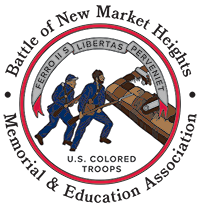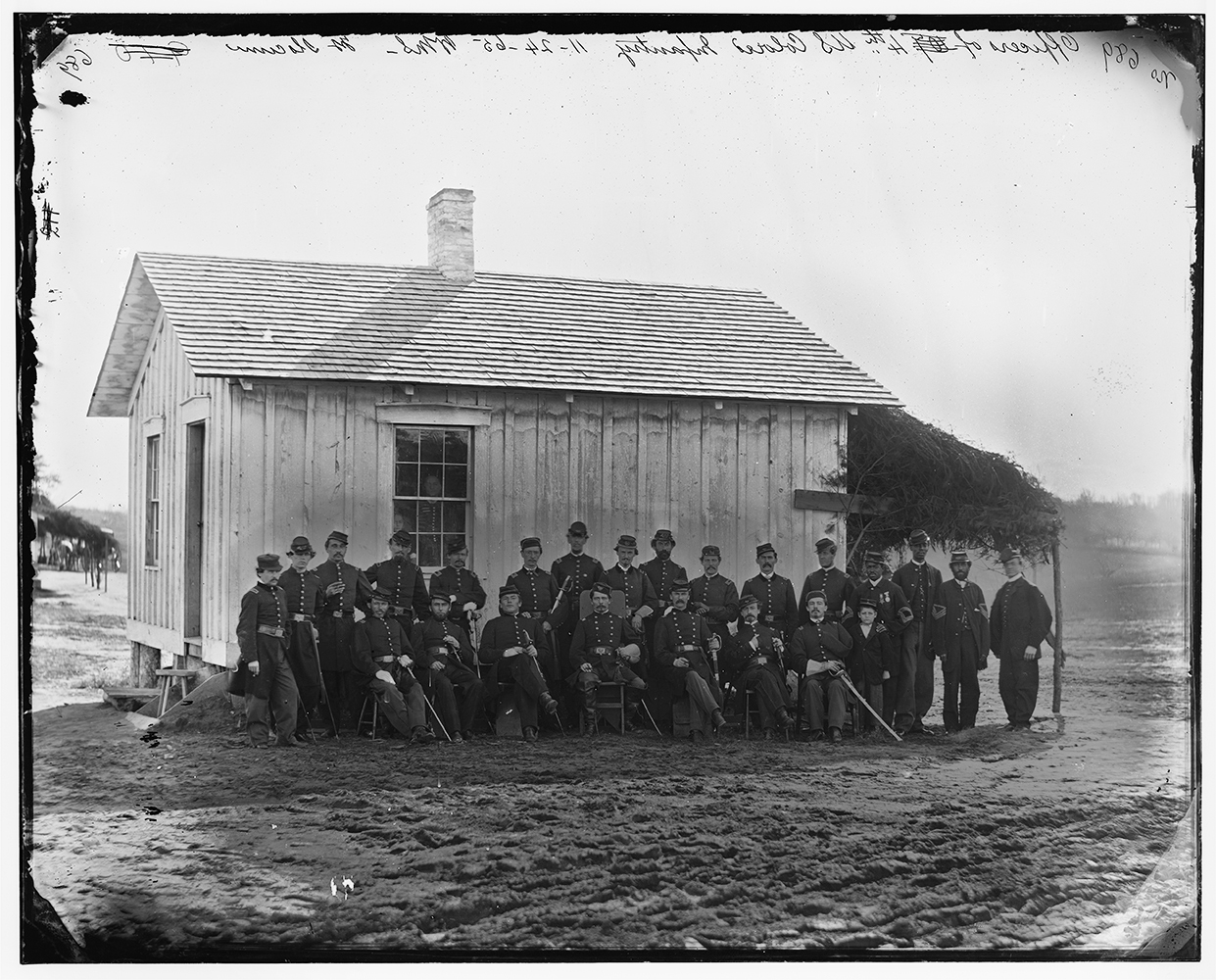
Image courtesy of the Library of Congress.
When I first saw a photograph that captured a group of officers in the 4th United States Colored Infantry (USCI) at Fort Slocum in the fall of 1865, I quickly noticed Sgt. Maj. Christian Fleetwood, proudly displaying his Medal of Honor and Butler Medal, both pinned to his chest. The second thing I noticed was a man seated on Fleetwood’s right side who had something different pinned to his chest, an empty left sleeve. I immediately wondered, who is this man, can I possibly identify him?
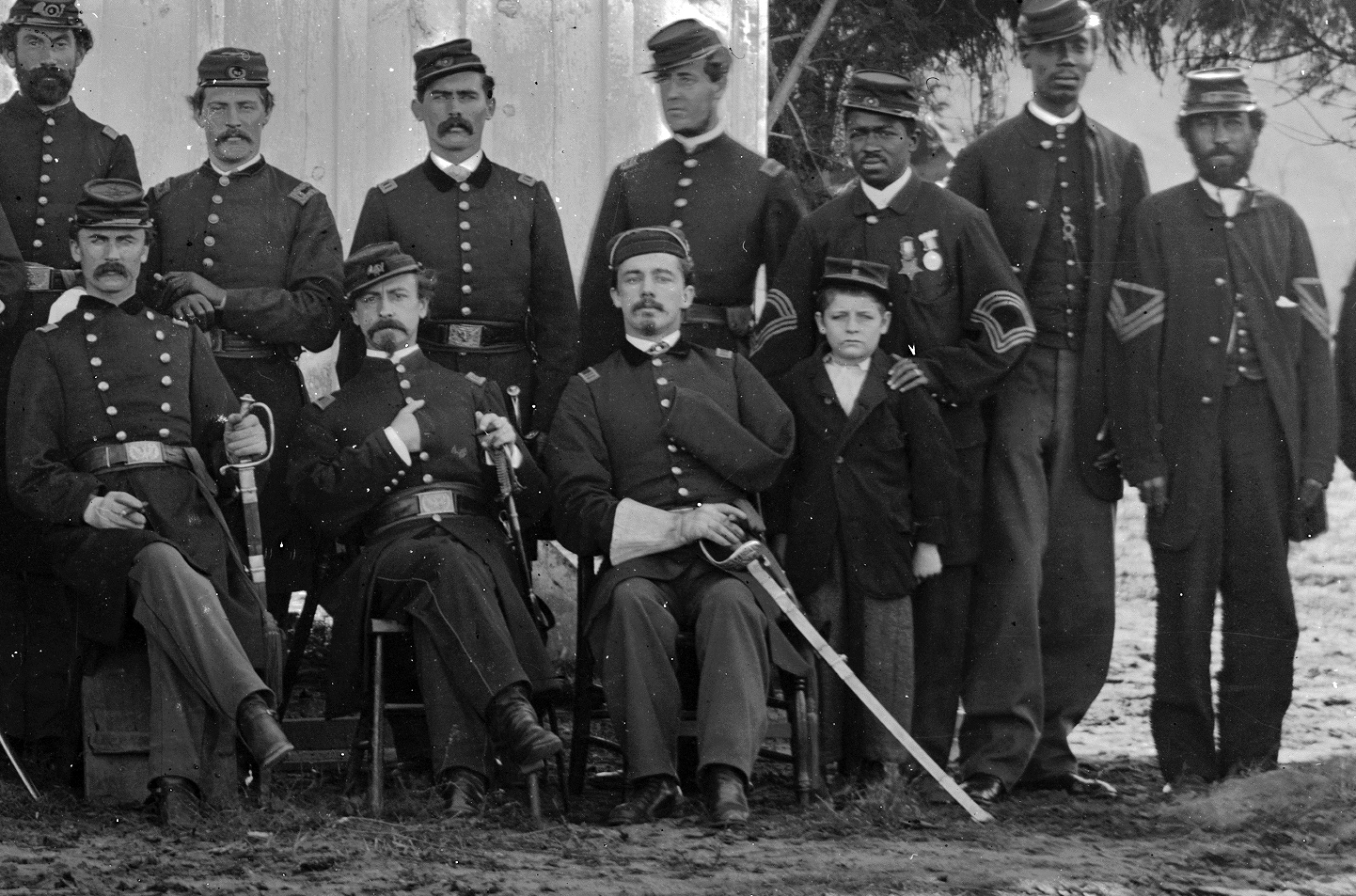
Image courtesy of the Library of Congress.
Later, while constructing a list of casualties from the Battle of New Market Heights for the 4th USCI by using the soldiers’ Complied Military Service Records, I came across Lt. James Murray Hoag, an officer in Company E.
Before receiving a commission in the United States Colored Troops, Hoag served in the 9th New York Heavy Artillery in 1862 and 1863. Hoag joined the 4th USCI shortly after it formed in the late summer of 1863. The 20 year old 2nd lieutenant endured a two-week period of illness in the spring of 1864. However, it appears that Hoag recuperated in time to participate in the 4th’s first taste of battle at Baylor’s Farm and along the Dimmock Line at Petersburg on June 15, 1864.
Hoag received promotion to 1st lieutenant and reassignment to Company B on September 21, 1864. A week and a day later he helped lead his company into the fight at New Market Heights. During the battle, Hoag received a wound to his right shoulder and another to his left arm. His left arm injury required amputation above the elbow. Maj. Gen. Benjamin Butler mentioned Hoag’s courage in his October 11 message to the Army of the James. Butler wrote of Hoag, “although on the sick list, and suffering from the effects of fever, insisted on leading his company, until he fell, wounded in two places, at the enemy’s lines of abatis.”
Forwarded to the general hospital at Fort Monroe, Hoag endured a rather lengthy recovery. While healing, he received a promotion to captain of Company C, filling the vacancy of William V. King, who was killed on June 15 at Petersburg. Receiving a furlough to go back home to New York state, Hoag also planned to use the leave time to search for a prosthetic limb.
Information in Hoag’s service records states that he received a disability discharge in April 1865, but Hoag was back in the ranks by about that time. In the summer and fall he served on detached duty with the Freedmen’s Bureau in North Carolina. Back with the 4th, and assigned to the Washington D.C. fortifications that fall, Hoag and the other officers apparently sat for the photographs at Fort Slocum shown here.
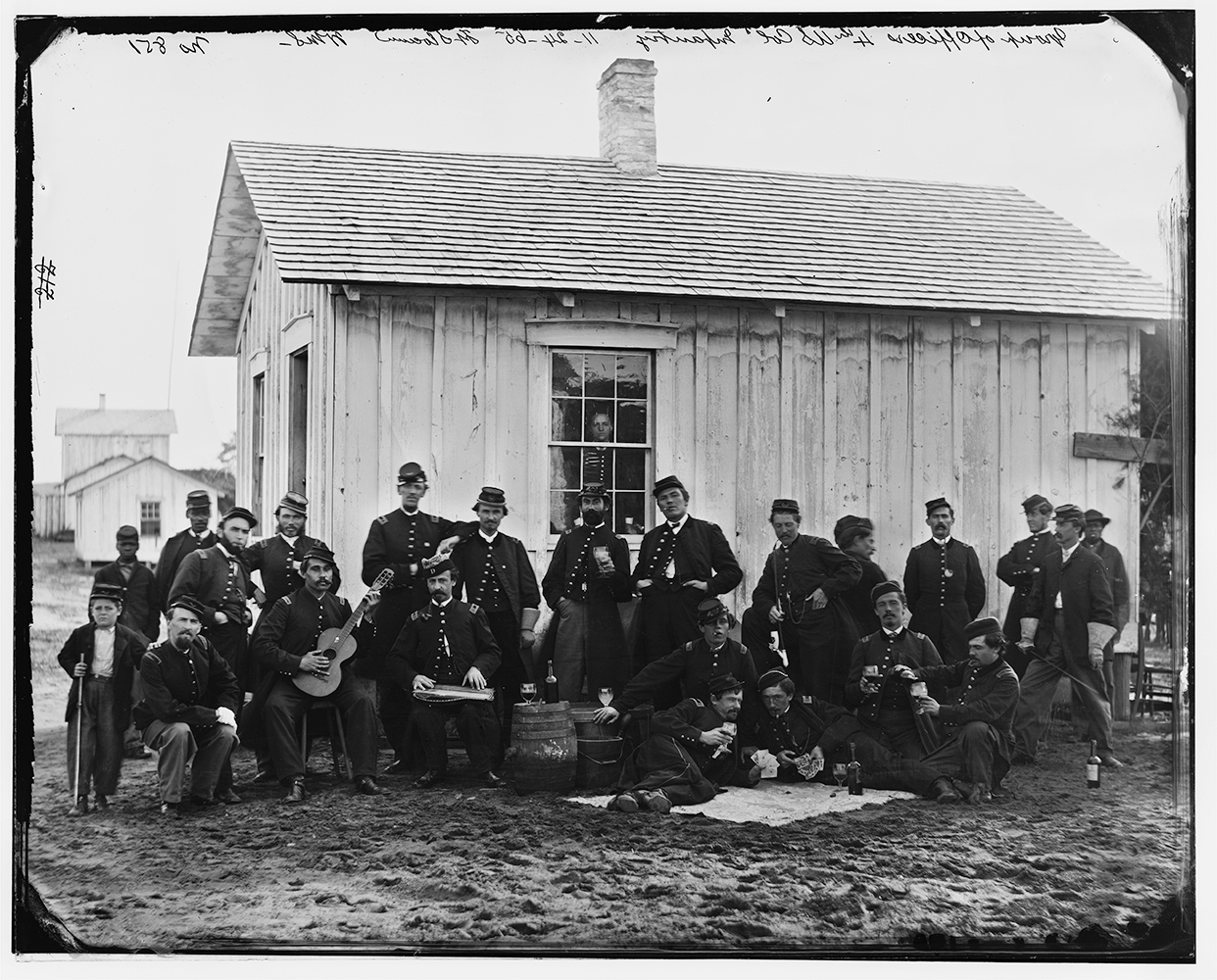
Image courtesy of the Library of Congress.
Another photograph, apparently made at the same time as the one with Sgt. Maj. Fleetwood, shows the officers of the 4th at leisure. Some of the officers are playing cards, some are enjoying drinks, and some are playing musical instruments. Curiously, Fleetwood is absent in this particular shot, but Hoag (or who appears to be Hoag) wears the same distinctive cap and still has his sleeve pinned to his chest as in the other photograph. His then rank of captain shows with his shoulder straps.
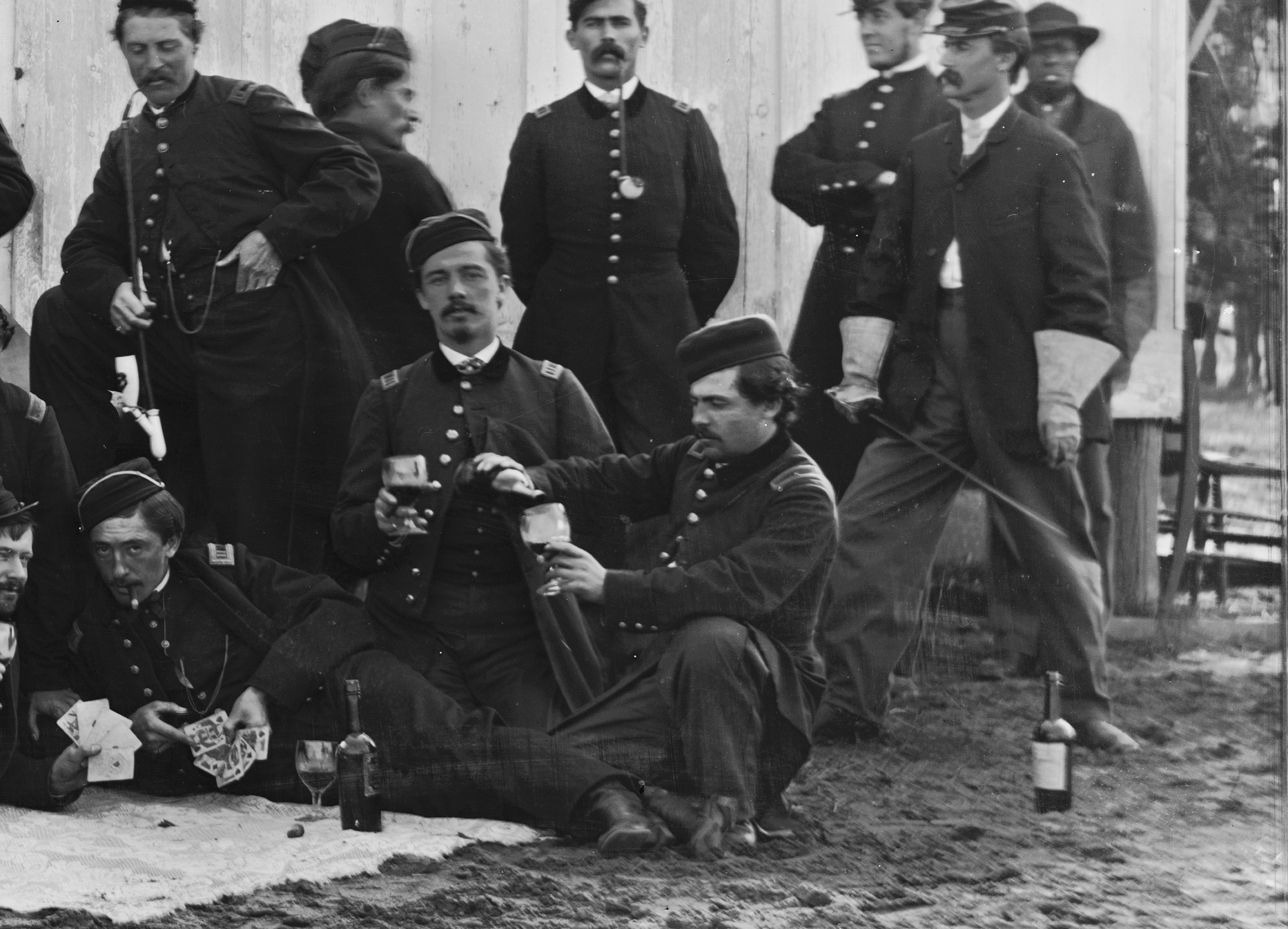
Image courtesy of the Library of Congress.
The 4th mustered out in the spring of 1866, but Hoag remained in the service and later received brevet promotion to lieutenant colonel. He soon reported to Freedmen’s Bureau duty in southeastern Georgia. While in Savannah, Hoag met his future wife. The couple soon married and later moved to Iowa where they lived for many years raising Shetland ponies.
A few years into the 20th century, Hoag moved to Washington D.C. and then Buffalo, New York, to recruit for the army. His return to military life proved rather short though due to poor health. Hoag then moved to California where he passed away in 1917. A final return trip east brought Hoag’s remains to Arlington National Cemetery where he received a soldier’s burial.
